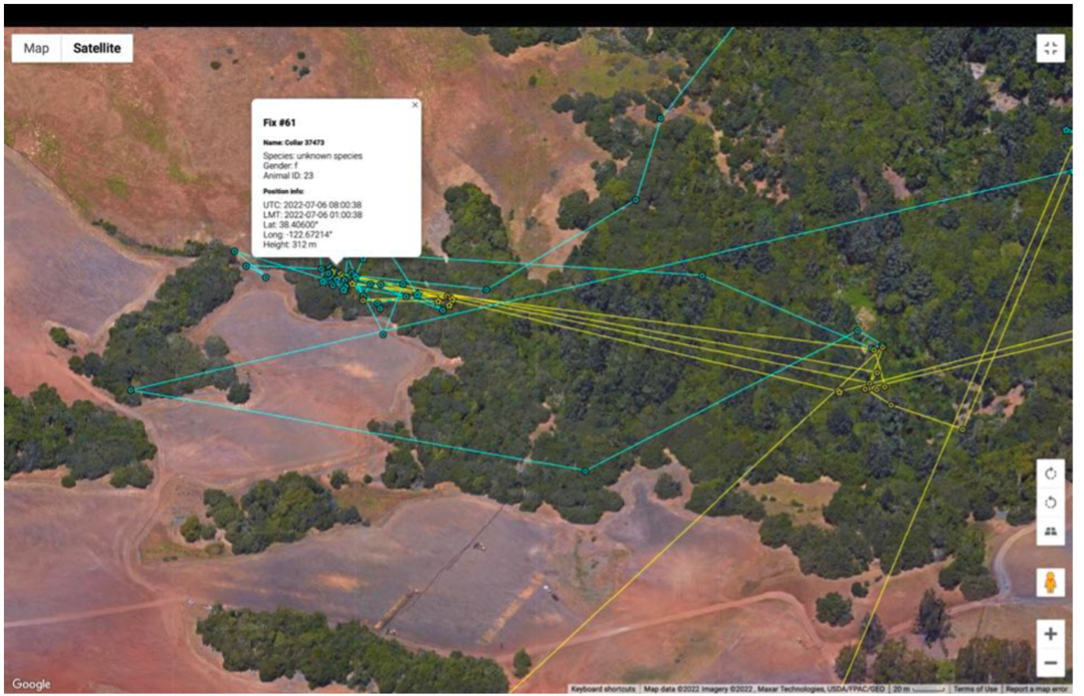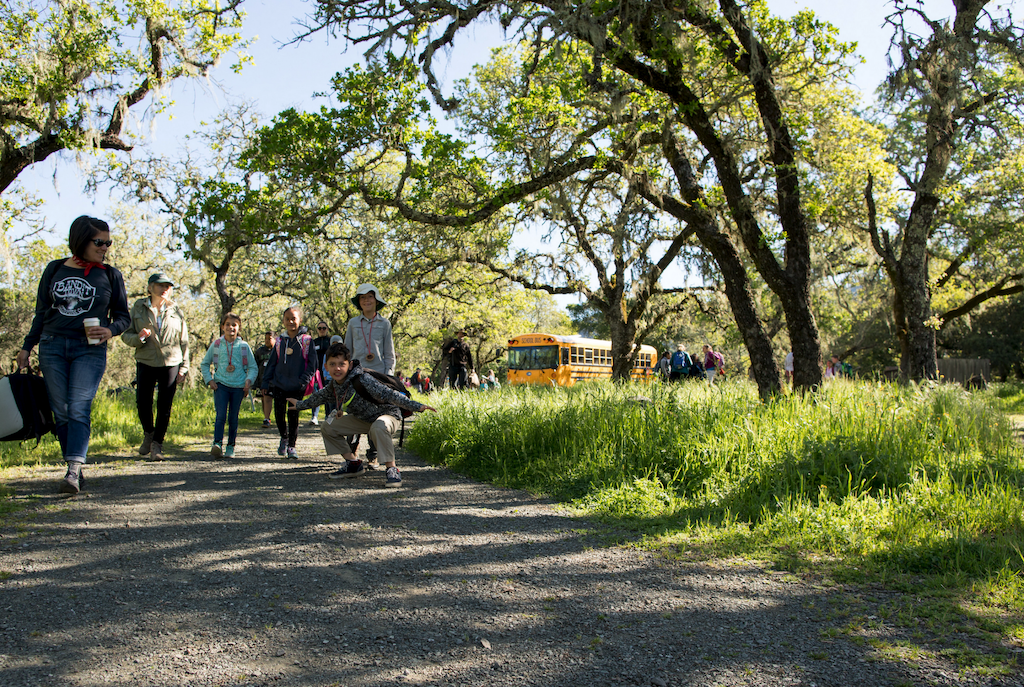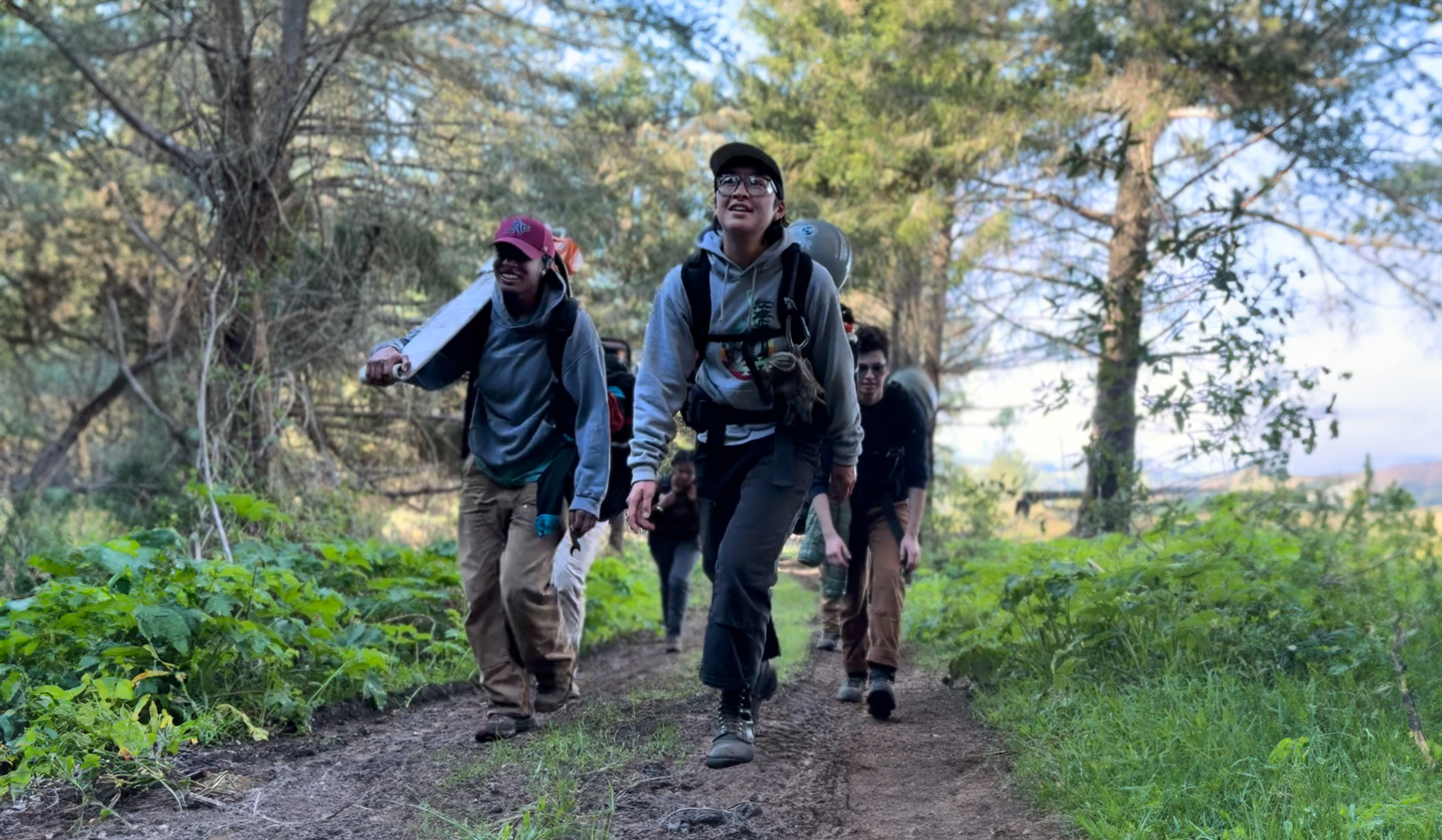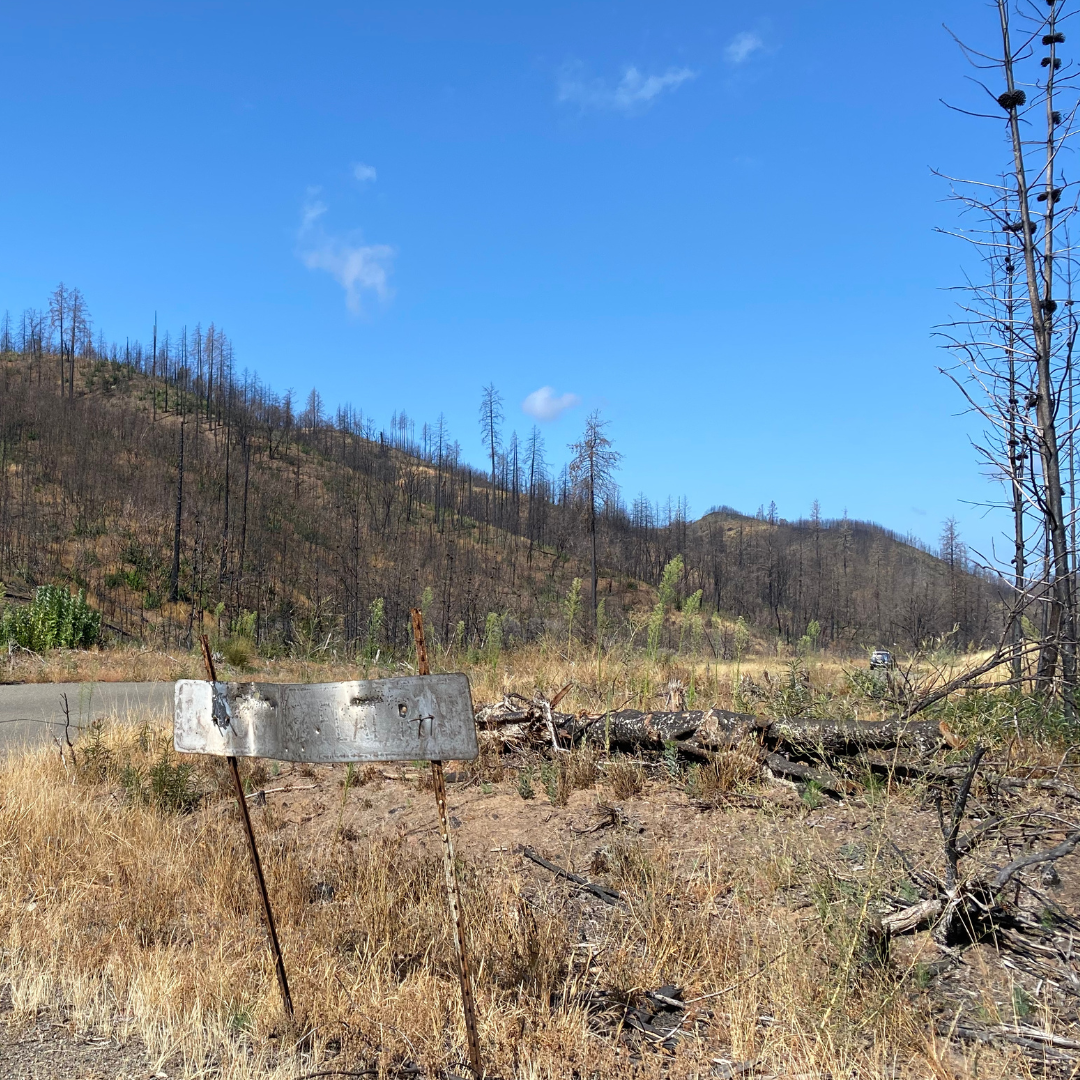Ongoing tracking data and diet study continue to reveal interesting mountain lion behavior
It is common to see a pride of African lions sharing a kill, but until recently, it had largely been unheard of for North America’s big cats to gather around a meal. Mountain lions are known to be solitary creatures that are expected to avoid contact with unrelated lions in their range. However, recent research in Wyoming has unveiled behavior that suggests these cats get together more than was previously thought. Based on these findings, Quinton Martins and his research team, who study the movements and behavior of mountain lions in the Napa-Sonoma-Mendocino region, have been on the lookout for similar behavior in the California cats.
So, in July when Quinton noted GPS-tracking data for the dominant male P13 and female P33 in close proximity to each other, he was eager to better understand what had transpired. Was it a mating event between the two or something else? “From our observations, mating lions typically do not hang about in one place for too long — we would expect to see some movement where the male follows the female for a day or two,” he explained.
In this case, however, the two lions spent most of the time together in a concentrated area (denoted by a cluster of GPS points), behavior more often seen while feeding on cached prey. A quick reconnaissance of the area by graduate student Jake Harvey revealed yet another interesting glimpse into the lives of local mountain lions.
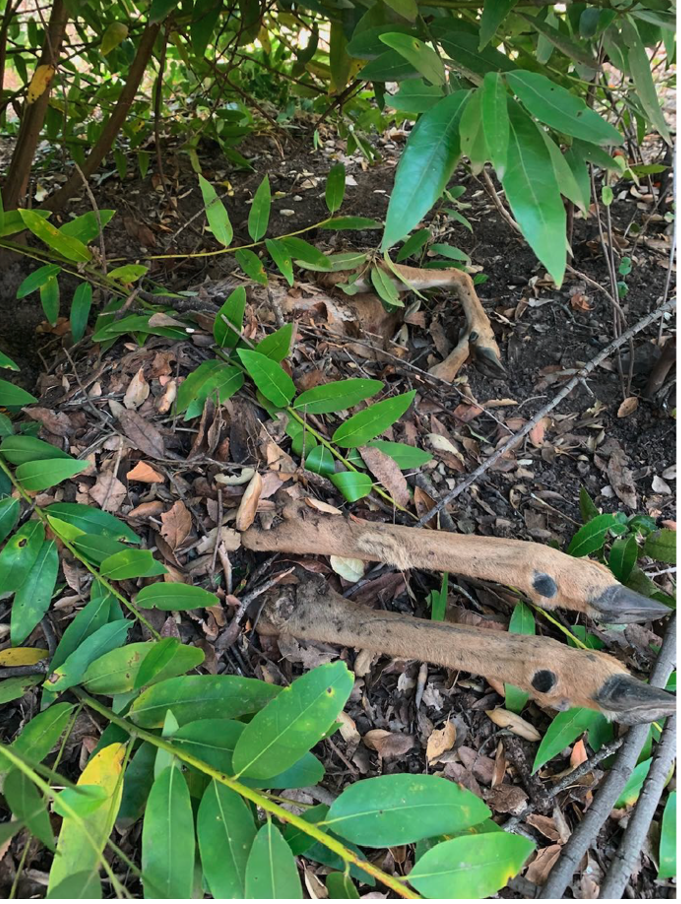
Surprise meal shared between lions
The female mountain lion P33, who was captured and collared for the Living with Lions study in 2021, killed a buck in the Bennett Valley area. To Martins’ surprise, 6-year-old male lion P13 located the kill and spent the following day-and-a-half sharing the meal with P33.
“I have seen this with leopards in Africa before, but never with mountain lions until now,” Martins added.
Sharing of kills has been recorded in the Grand Tetons in Wyoming, but documentation of sharing food by unrelated mountain lions elsewhere has been rare, particularly in regions with a moderate climate, where access to resources remains relatively constant throughout the year – unlike areas like Wyoming or Nevada that get heavy snow in the mountains resulting in more overlap of individual lions in winter. Authors of the work in Wyoming summarized in their discussion: “Direct reciprocity proves a stable cooperative strategy when the costs of sharing are low, there is a high chance of repayment, and animals are likely to interact multiple times…” which alludes to the fact that the mountain lions we are studying are possibly more social than we originally thought.
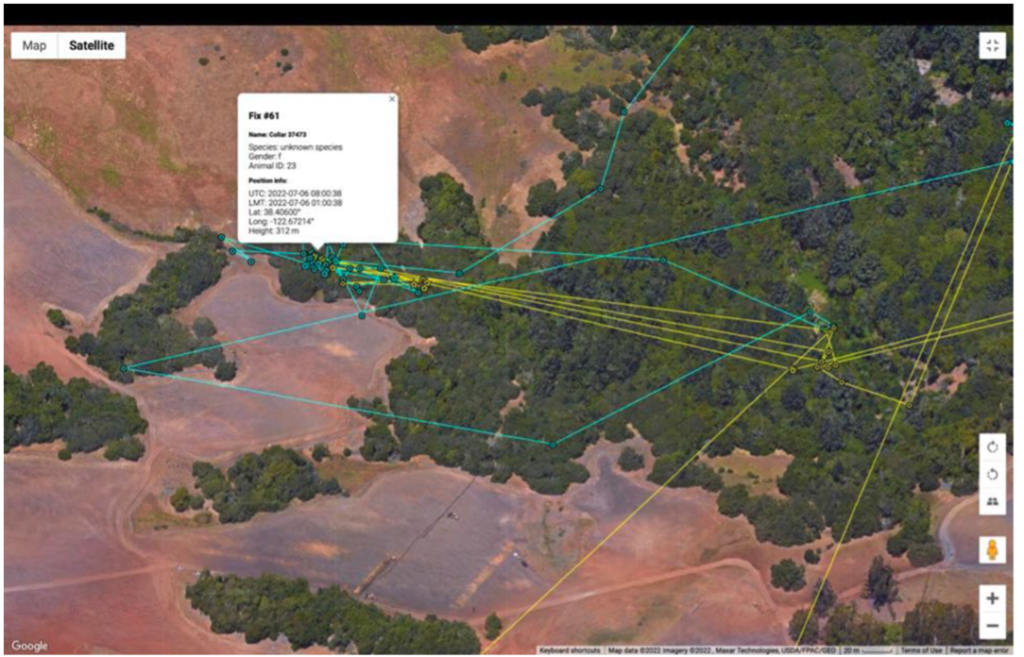
The two lions spent most of the time by the kill (see cluster map, above), but also a couple of
hours together further to the east of the feeding site. “Now 3+ years old, P33 (the female) is quite likely of breeding age, so we will keep a close eye on whether this or future meetings may produce a litter of cubs,” added Martins.

P13 makes a habit of sharing, this time with Super-Puma
Remarkably, not two weeks later, P13 apparently killed a large buck near Trione-Annadel State Park, only to end up sharing the meal with Sonoma’s “Super-Puma” P1, now estimated to be almost 16 years old. In the Wyoming study it was found that males benefitted from female kills more often, as well as older lions exhibiting tolerance more often, making this of added interest to the team to see an old female taking advantage of a males kill. P1 remained at the kill with P13 for 5 days, two times the average length of time spent at deer kills recorded in this North Bay study.
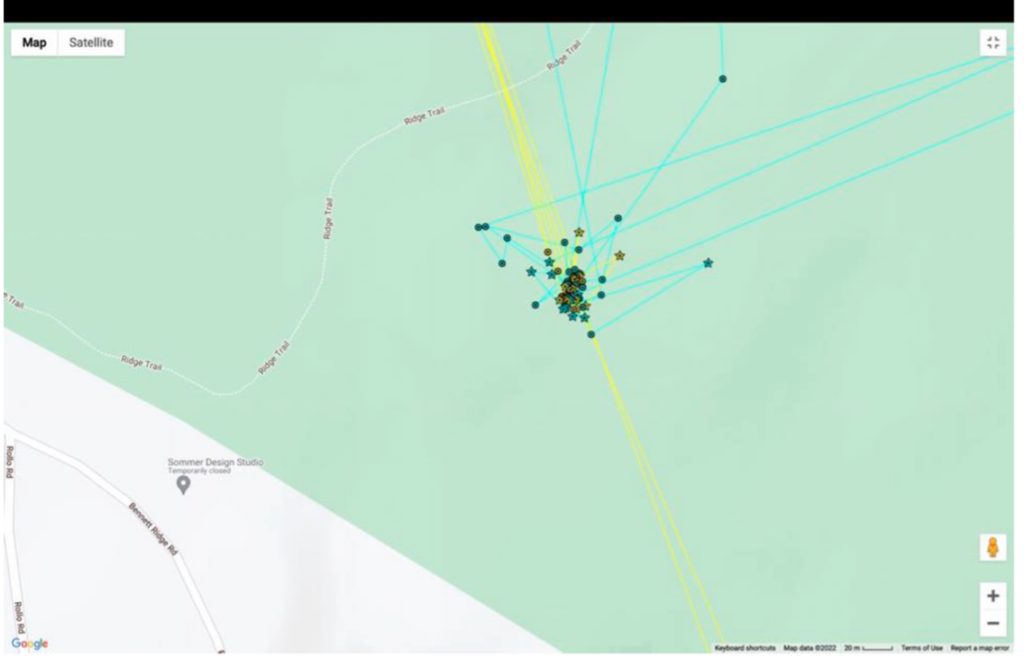
Upon investigation, Jake found the trampled vegetation around the feeding area more disturbed than usual, leaving the team unsure what to make of the interactions between the two lions while at the kill site.
Since these first two observations of kill sharing were documented, a second record of P13 and P33 sharing a kill was recently recorded, again with P13 benefiting from a kill made by P33.
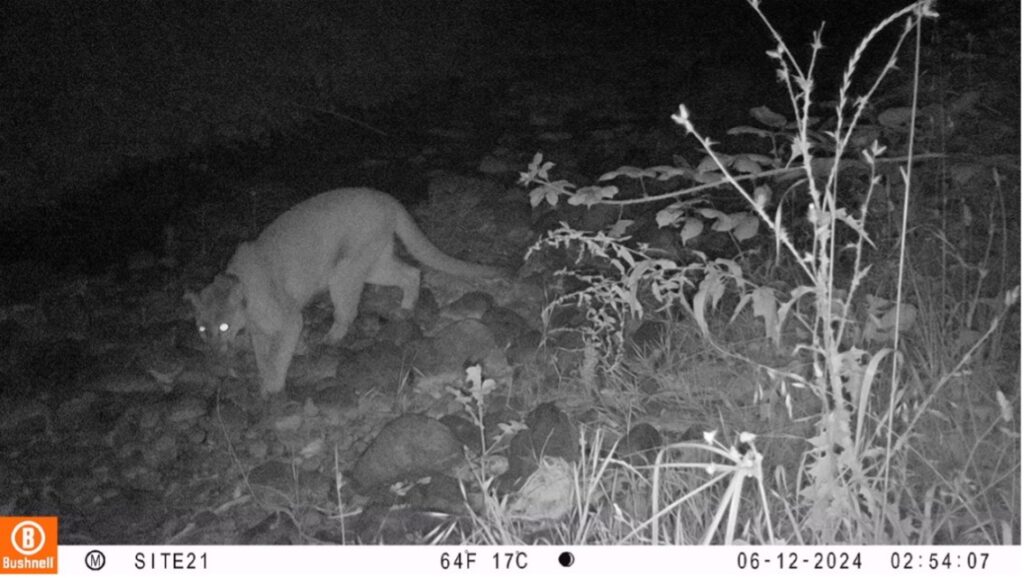
| 2022 Monitoring Period Prey Items | 146 |
| Black-tailed deer | 108 |
| Livestock (sheep & goats) | 25 |
| Wild boar | 7 |
| Racoon | 3 |
| Otter | 1 |
| Squirrel | 1 |
| Rabbit | 1 |
| Domestic cat | 1 |
New, exciting data emerges in continued mountain lion diet study
Although just a slice of an ongoing data collection effort, information gleaned from kill sites in 2022 give researchers even more to chew on about the diet of North Bay mountain lions. Of 188 GPS-cluster sites identified, 131 were visited and 146 prey items found cached or consumed. The most common prey item were black-tailed deer (74%), livestock–goats and sheep (17%), and wild boar (2%).
In western Sonoma County, Jake recorded an otter being killed by male mountain lion P36. “This is the first record of otter in lion diet for our study, which is really exciting,” said Martins.
Since 2016, the Living with Lions research and education project has sought to increase understanding of the mountain lions living in the Northern San Francisco Bay area; to learn what impediments may exist for movement within their range, learn more about their behavior, and help residents reduce risk of conflict with pets and livestock. The project is supported in part by the Disney Conservation Fund, which funds our research as well as our youth education and community outreach programs.
“The sorts of events we have documented during July would simply occur without us knowing anything about them were it not for the use of the GPS collar technology available to us today,” acknowledged Quinton.
